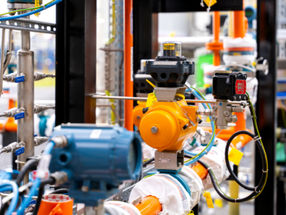Spectacular Growth of the Green Energy Market
Advertisement
The Green Energy sector is growing at breathtaking speed, driven by the challenges of climate change, surely unprecedented in our time. Globally, it has already become a multi-billion dollar industry, with very high growth potential which is attracting record investment. Over the last few years, eco-industries in the European Union have grown to such an extent that they have now become a prominent force across the entire European economy. Today they represent about 2.1% of its Gross Domestic Product and account for 3.5 million jobs.
Frost & Sullivan Green Energy experts are analysing all the key segments of this market, both in Europe and globally. There is no doubt that this area is expanding at an extraordinary rate and - based on their research - Frost & Sullivan analysts forecast that revenues are set to double, triple or increase even more over the next few years.
Biodiesel
Biodiesel is surely one of the fastest-growing areas in the chemical industry and in the Green Energy sector. Last year in Europe we consumed 3.89 million tonnes of biodiesel, generating revenues of EUR 2.93 billion. By 2013 the total EU biodiesel market is forecast to be 9.75 million tonnes in terms of unit shipments while revenues are forecast to be EUR 7.46 billion, based on current biodiesel market prices. The average growth over the forecast period will be 14 percent.
Renewable Energy
New analysis from Frost & Sullivan European Renewable Energy Market - Investment Analysis and Growth Opportunities reveals that this market earned EUR 8.89 billion in 2005 and estimates this to reach EUR 14.54 billion in 2010. Even in China, the Government feels there is an urgent need to take action and is stepping up efforts to accelerate the development of clean energy. Frost & Sullivan research analysts reveal that the Chinese Renewable Energy Markets earned revenues of $6.9 billion in 2006, and that these are likely to reach $17.9 billion by 2013. Amongst the market segments, solar PV will be one of the fastest growing renewable energy sources in China until 2013, with its growth exceeding even that of wind power. The biomass power industry has great revenue potential, not only because of sufficient Government funding but also due to the adequate availability of feedstock fuels.
Green Buildings
Buildings are responsible for 40% of Europe's total carbon-dioxide emissions. Climate Change is the EU's top priority according to the European Commission and Member States are committed to cutting down on CO2 emissions to meet the Kyoto Protocol targets. Despite all their efforts, Member States keep on wasting a significant proportion of their energy due to inefficiency. Therefore, if the EU is to achieve its targets, reducing energy use in all buildings is essential. According to Frost & Sullivan, if more stringent standards are applied to new buildings and renovations, the EU will achieve a significant cut in greenhouse gas emissions. Unfortunately, any efforts will be in vain if they are not accompanied by a change in consumer behaviour.
Hybrid vehicles
Reducing emissions below 140 g/km of CO2 will be possible mainly with the help of alternative fuels and hybrids (micro, mild and full). While original equipment manufacturers (OEMs) are aware of this fact, further development or market acceptance of these alternative fuels and hybrids is restrained by the distribution network, availability and high implementation costs. According to Frost & Sullivan analysis of the Alternative Fuels and Hybrid Technologies, while advancements in engine technology have helped reduce emissions to an average of 160 g/km, hybrids, ethanol, biofuels, compressed natural gas (CNG), hydrogen and fuel cells are necessary to reduce them further. The main priority of OEMs today is to reduce emissions, which will require the help of local governments and fuel suppliers to promote alternative fuels and hybrids in a cost-effective manner.
Waste Management and Recycling
An estimated 1.3 billion tonnes of waste is generated annually in the EU and this still continues to rise. The overall volume of waste is growing at rates proportional to the economic growth rate of the EU25. Amongst the various streams of waste generated, management of hazardous and municipal waste alone costs the EU an estimated EUR 75 billion annually. This translates to the waste management and recycling industry earning huge revenues that are expected to increase enormously over the next few years. Frost & Sullivan finds that the European Waste Management and Recycling market earns total annual revenues of EUR 100 billion.
If you are interested in receiving more information about our Green Energy Subscription, please send an e-mail to Chiara Carella using the 'Contact' button below.



































































